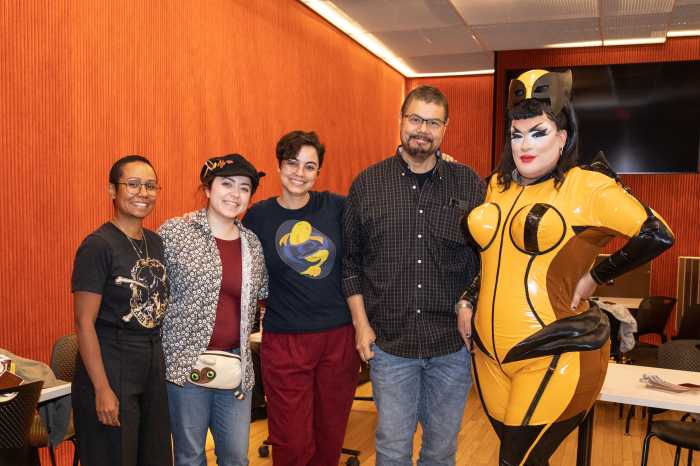More Manhattan residents and organizations have expressed opposition to a $12 billion casino proposal at Hudson Yards, fearing that it would negatively impact The High Line public park.
Protect the High Line members told amNewYork Metro that three more community organizations have joined their public awareness campaign to stop Related Companies and Wynn Resorts from building a $12 billion casino resort near the 1.45-mile-long park.
The organizations — all with diverse priorities from green space to street culture and mobility to historic architecture — said that the development plan reflected in the rezoning proposal would harm the surrounding neighborhoods.
Sara Lind, co-executive director of Open Plans, which promotes more open space within the five boroughs, said the High Line is special and “embraces and celebrates” urban density. She is particularly concerned about a possible parking lot or garage proposed near the park.
“They are proposing adding a large number of additional parking spaces into a Manhattan neighborhood near transit where we are looking for tourists and residents alike to be able to enjoy the public space that the High Line offers,” she said. “Adding parking will encourage people to drive to the area, increasing bad congestion that is already there.”
Related released updated plans for its development — dubbed Hudson Yards West — last month which include a full-service casino, 1,500 hotel rooms, 1,500 housing units and a 5.6-acre public park. With the casino at its core, the development would be positioned between W. 30 and 33 Streets and 11 and 12 Avenues in the Western Rail Yards, located on the High Line’s north end.
According to the project’s website, a significant infrastructure overhaul in the neighborhood is part of the plan and includes “garage access for valet parking.”

A spokesperson for Related shared a statement with amNew York Metro.
“We cannot let debates over parking spots stand in the way of a massive public park, tens of thousands of jobs and careers, safer streets, affordable housing, and better transportation for New York City,” the spokesperson said. “We will continue to meet with stakeholders across the local community as we work together to deliver these important benefits for the neighborhood and New York’s future.”
Fear casino would ‘degrade’ neighborhood
Meanwhile, the two other community groups that joined Protect the High Line — Parks and Trails and Save Chelsea — expressed their concerns about the development, too, especially as it pertains to conserving nature and preserving neighborhood character.
A 2009 agreement between Related and the city includes a commitment to more housing, including the possibility of up to 5,700 units, and 4.3 acres of open space with multiple public access points along the Western Rail Yards.
According to the development’s website, there is more cohesive public green space planned now than there was in in 2009, featuring 5.63 acres of contiguous green space that will be “open to all,” but advocates are not buying it.
“With park visitation in New York at an all-time high, it is especially important that we expand and improve parks and open space,” said Paul Steely White, executive director of Parks & Trails New York. “The proposed rezoning of the Western Rail Yards would do just the opposite. Constructing a building over a portion of the High Line, reducing usable public space, and taking away park access from the public for an undetermined amount of time are not sound development policies.”

Pamela Wolff, president of Save Chelsea, a group that aims to protect the residential character of the historic neighborhood that surrounds the High Line, said she “stands by” the 2009 plan for the Western Rail Yards.
“The 2009 plan gives more space and light to the High Line and provides thousands more units of critically needed housing than the new proposal,” she said.
She added that the ever-popular, vertically shaped High Line, which opened in 2009, should not be “degraded” by a casino.
“The High Line is not just a cherished neighborhood park, but an internationally admired cultural treasure that Chelsea and the City of New York are proud of, a phenomenon that has inspired similar projects the world over,” Wolff said. “It should not be degraded by a misplaced casino.”
Read More: https://www.amny.com/news/






































